The Catskill Mountains have two poisonous snakes. The Timber Rattlesnake (Crotalus horridus) and the Northern Copperhead (Agkistrodon contortrix mokasen). Most poisonous snakes in the Catskill Mountains are in Ulster County. In 2009 Timber Rattlesnakes were found in Greene County in the Kaaterskill Clove from Moore's bridge up to the Five Cascades. In 2010 Timber Rattlesnakes were found between Plateau Mountain and Silver Hollow near the ledges.
Timber Rattlensnake Morphs:
Timber Rattlesnakes have a number of morphs. Biologist define Timber Rattlesnakes into two morphs: Light morphs and Dark Morphs. They are also called yellow morphs for the light morphs and Black Morps for the Dark Morphs. The yellow morph will have a yellow or tan head, with a yellow chin. The dark morph will often have a black or brown head with a white chin. But, herpetologist consider timber rattlesnakes to have three morphs: (1) Black morph; (2) Yellow morph; (3) Tan morph. Some people consider timber rattlesnakes to have four or five morphs. The main colors can be Black, gray, tan, green, and yellow. Different morphs often sit where they blend in with the earth. The tan morph will sit in the leaves and blend in. There is such a high diversity of colors that it seems that no two Timber Rattlesnakes have the same colors. The variety seems endless. Rattlesnakes have a large triangle shaped head, and rattles on the tail. The tail is solid black in color irregardless of the morph.
Timber Rattlesnake Size and Age:
The average Timber Rattlesnake is 3 feet to 4-1/2 feet long. Some will reach up near 6 feet long. The longest one on record was 6 feet 2 inches long. The average female will be 36 inches long on the average, where the males will be 42 inches on the average. Males have a slightly thinner tail. Their bodies are quite stocky and thick. Their body is often the size of a man's forearm. The live an average of 16-to-22 years, with the maximum being 30 years old. The male timber rattlesnakes will become sexually mature at approximately 5 years old, where the female timber rattlesnake will become sexually mature at 7-to-11 years old.
Timber Rattlesnake Mortality:
Mortality of Timber Rattlesnakes come from humans, starvation, predatation, and freezing to death during hibernation. Common predators are birds-of-prey (red-tailed hawks and great-horned owls), coyotes, bobcats, foxes, turkeys, crows, ravens, deer, skunks, and other snakes (Black Racers and Black Rat Snakes). Some of the predators can only kill young newborns. Carnavoirs kill three times as many adult rattlesnakes as birds-of-prey. Birds-of-prey often grab the rattlesnake just behind the head, and quickly dispatch the head before they get tagged. Some of the predators can get tagged by the rattlesnake, and both animals may die. Timber Rattlesnakes generally prey upon mice, voles, rats, chipmunks, red squirrels, gray squirrels, and rabbits. When prey is not abundant, they will prey on birds. Timber rattlesnakes most common prey are mice and voles. Often comprise 75-80% of their diet. They can also prey on insects, frogs, toads, lizards, and small snakes. Smaller snakes prey on smaller prey, where larger adults like larger prey. Males are more likely to sit in a coiled ambush position next to a tree, where females are more likely to sit in a coiled ambush postion next to a fallen log. Deer can kill Timber Rattlesnakes by stomping on them. Great-Horned Owl are quite capable of catching them and killing them quickly. But Great-Horned Owls can only pick up timber rattlesnakes weighing under 12 pounds. Turkeys, crows, ravens, and other snakes are more likely to pray on newborns then adults. Gray squirrels often an interesting problem for timber rattlesnakes. Their tail flicking causes problems for timber rattlesnakes. It makes it hard for them to figure out where to strike. Furthermore, gray squirrels seem to have a resistence to the venom. Red squirrels don't fare as well. When timber rattlesnakes get to around 25 years old, they become incapable of catching their owl prey, and often will starve to death, or be preyed upon by predators. If timber rattlesnakes are removed from their habitat, they have little chance of surviving. Relocation of timber rattlesnakes fare very poorly, and will almost always die. They are habitual like most animals.
NOTICE: Do NOT touch dead timber rattlesnakes! Their nervous system still works, and you can still be bitten. Furthermore, if the extremely sharp fangs scrape your skin, you will be envenomated! Just like you were bitten by a live rattlensake! This is NOT an uncommon problem.
Timber Rattlesnake Newborns:
Timber Rattlesnakes are born live from the mother. When they are born, they are 12 inches long on the average. They can be born as small as 8 inches and as large as 16 inches. When they are born, they have full strength venom and full coloring. They will stay with the mother for 1-2 weeks before sheding their skin for the first time. After sheding their skin, they will disperse. The gestation period for Timber rattlesnakes is around 4-5 months. Timber rattlesnakes mate in the spring and fall and give birth 4-5 months later They will give birth from mid-August to Mid-September. They give birth to 4-14 rattlensakes every three to five years. The average female timber rattlesnake will give birth to 9 young rattlesnakes. Young timber rattlesnakes have a high mortality rate. They are often preyed upon by a large variety of predators. Young timber rattlesnakes will climb trees to evade predators and flooding. It is not unusual to find them in the bushes or on tree branches. When Mid-October comes, the young will follow the adult timber rattlesnakes scent back to the den.
Timber Rattlesnake Dens:
Timber Rattlesnake dens are usually located on southerly facing slopes. The slope of the den is usually very steep. Sometimes up to 70 degree incline. This keeps flooding from the spring thaw from flooding the den. But, sometimes the den can be a small opening on the forest floor. The den is often a small opening in the rocks, and the natural cavitiy will move below the frost line. Timber rattlesnakes will den from Mid-October to Mid-April. Sometimes will stay outside the den into early November if the temperature stays above 52 degrees. They will den with other Timber Rattlesnakes, Northern Copperheads, Black Racers, Black Rat snakes, and Garter snakes. There will sometimes be 100 snakes in a den. Smaller dens can be 30-60 snakes. Large dens can be 100-200 snakes. They will keep each other warm. Due to being cold, they are lethargic when they emerge and will not feed right away. Timber Rattlesnakes will overwinter in the same den their entire lives. When biologist try to relocate Timber Rattlesnakes, the snake will travel endlessly trying to find it's original habitat. Most will die trying to find their home. During this process, they will endanger themselves and others. This is why snake collecting is such a bad idea. Relocation rarely works. New York State has about 200 dens where Pennsylvania has about 600 dens.
Timber Rattlesnake Habitats:
Timber Rattlesnakes can be found in two locations. First location is grassey open areas, with a southerly exposure with rocks mixed in with the grass. It will often have about 25% tree cover. Timber rattlesnakes found in this area are usually pregnant females (Gravid). The pregnant females need a little higher heat, so you will often find them basking on ledge rocks, and in open areas. When they get too hot, they will move into the grass or brush to cool off. They are often very hard to see when they are in thick grass. They will often spend the morning warming up in the open, and cooling down in the thick grass in the afternoon. They are often found on the edge of trails and roads. The second location is in wooded areas with tree cover of 50-75%. You will find males and non-pregnant females timber rattlesnakes in these wooded areas. The favored habitat is a mixture of pine and hardwood forest.
Timber Rattlesnake Habitat Size:
Timber rattlesnakes are ambush hunters and are willing to wait hours for an opportunity. You can often find them sitting behind a rock waiting for prey to come around the corner. Rattlesnakes come out with the sun, and go in when the clouds come in. They like areas that are open with low height rocks. But, they can also be found in wooded areas. Often times, where you find one Rattlesnake, you will find many others very close by. Most areas that support rattlesnakes will be found within 1 square mile. During the summer, they can travel from 1.3-to-2.5 miles away from the den. Non-pregnant females will travel up to 1.3 miles from the den, while males will travel up to 2.5 miles from the den. pregnant females will stay very close to rookeries, and rookeries average around 500' from the den. The maximum distance from the den for males is around 4.5 miles. When prey is plentiful, the area may become smaller. Lack of prey will expand the area. But, each Fall they will migrate back to their original den, and will use the same den their entire lives. Timber rattlesnakes will also sit in trees waiting for birds to fly to a branch near them. They will only sit in trees when prey on the ground is scarce. Baby timber rattlesnakes will resort to climbing trees to escape predators. Adult timber rattlesnakes can climb trees but often don't. Adults have a harder time climbing trees due to their heavy and stocky body.
Timber Rattlesnake Hunting Times:
Timber rattlesnakes are dinural during the Spring and Fall. But, in the heat of the Summer they become crepuscular to prevent overheating. The most common feeding time is 9 PM to 8 AM. They will spend an average of 9.7 hours/day in the coiled ambush position.
Timber Rattlesnake Hunting Locations:
Most Timber Rattlesnakes spend most of the time on the forest floor. But, young timber rattlesnakes can be seen up in the trees. They may be hanging from small tree branches. They are often waiting for birds to fly in. When prey is scarce, mature timber rattlesnakes will go up in the trees and wait for birds. But, it is very rare for mature timber rattlesnakes to do this. Getting tagged by a young timber rattlesnake can be more dangerous then getting tagged by a mature timber rattlesnake. Mature rattlesnakes have learned how to control the amount of venom released. Young rattlesnakes usually release the maximum amount of venom. Timber rattlesnakes move in a tear drop like path. They are habitual in their feeding and movements. After feeding, timber rattlesnakes will move to open areas to bask. These basking areas help them digest the food. After several days, they go back looking for more prey.
Timber Rattlesnake Swimming:
Timber Rattlesnakes rarely swim. But, they are quite capable of swimming on the surface, or even under the surface. Most timber rattlesnakes will try to keep their rattles above water. This happens about 70% of the time. If they get fearful, they will lower their tail into the water to move faster through the water. If their rattles do get wet, they will not rattle when they shake them. You can sometimes find them near the edge of Echo Lake in the Catskill Mountains. While timber rattlesnakes are not avid swimmers, they almost always have a water source for drinking.
Timber Rattlesnake Rattles:
Timber Rattlesnakes are born with one rattle, called a "button". When they shed their skins every 1-2 years, they get a new rattle. The aveage time for shedding is every 1.4 year of life. Rattles do break off, so you cannot guage the age of the rattlesnake by the number of rattles. Timber Rattlesnakes often do not rattle until you are about 3 feet from them. So, if you are moving quickly, you may step on them, or might get tagged by them. Most Timber Rattlesnakes do not want to give away their position, so they will not rattle unless they have to. Most Timber Rattlesnakes are not afraid of humans unless they come too close to them. That is when they start to rattle. In spite of popular belief, Timber Rattlesnakes will not move off the path when they hear or feel you coming. They will hold their ground. Timber rattlesnakes are not aggressive unless provoked. They would prefer to be left alone. There are also reports of people who have had timber rattlesnakes pass right between their feet. .
Timber Rattlesnake Heat Sensor and Eyes:
Snakes use their heat sensors to locate prey. All poisonous snakes in the United States have slit eyes, where non-poisonous snakes have round eyes. Both Copperheads and Rattlesnakes can strike very fast. It is very important that you never get within striking distance. If you do, they will strike. Timber Rattlesnakes have very poor eye sight. They do have excellent motion detection, heat sensing, and smell.
Timber Rattlesnake Skin Shedding:
The pictures on the top right is a Timber Rattlesnake (tan morph) that is just starting to shed it's skin. If you look at the eye it is not clear. This is always a sign that it is ready to shed. Once this snake sheds it will be tan again. The tan is about the color of aged leaves. Tan morphs blend in perfectly with leaves.
Timber Rattlesnake Historic Anti-venoms:
Back in the 1600's Timber Rattlesnakes were plentiful in the Catskill Mountains. The Mohawk Indians did have a way to combat the effects of a timber rattlesnake bite. Unfortunately, the white men never learned the forumla to learn how to reverse the effects. Some of the lousy adviced used to counteract the effects were poor. One poor way was to use a freshly killed chicken and put it over the bite area. Completely ineffective. It was also believed that if a person drank milk before the bite, they were doomed to die. This opened the door to snake oil salespeople. They often visited people in this region with magical formulas to counteract the venom. All of them were ineffective. But, the salesperson were long gone when they went to use it. Many people did die of bites each year. Today, we use CroFab Anti-venom. While the anti-venom is not very effective, it does work when enough is used. It must be injected within five hours to stop the catastrophic effects on the heart and kidneys.
Timber Rattlesnake Collecting:
It is illegal in New York to collect and keep Timber Rattlesnakes as pets. But, black market trading does occur. New York State DEC police enforcement has been pursing black market poachers. The fines are illegal collecting of Timber Rattlesnakes are incredibly high.
Timber Rattlesnake and Hikers:
The best protection that a hiker can use is thick leather hiking boots (above the ankle). Rattlesnakes rarely can penatrate thick leather hiking boots. Most strikes, but not all, are at ankle height. Leather sneakers or cloth hiking shoes will not prevent their fangs from biting thru and penatrating your skin. Never place your hand on a ledge where you cannot see what is on the ledge. Rattlesnakes like to bask in the sun on rock ledges. Never stick your hands or feet under rocks where a rattlesnake might be hiding.
Copperhead:
The Northern Copperhead has a triangle head, but they do not have a rattle on their tails.
Locations of Poisonous Snakes in the Catskill Mountains:
Timber Rattlesnake - Overlook Mountain (from the Overlook Mountain House to the fire tower).
Timber Rattlesnake - Echo Lake (near Overlook Mountain).
Timber Rattlesnake - Quarry by Overlook Trail and trail to Plattekill Mtn.
Timber Rattlesnake - Bottom of Devil's Kitchen Falls to West Saugerties.
Timber Rattlesnake - North side of Kaaterskill Creek up to Rt 23A (from Fawn's Leap to the Five Cascades - old Rt 23A).
Timber Rattlesnake - Vernooy Falls.
Timber Rattlesnake - Balsam Swamp (center of loop near Vernooy Falls)
Timber Rattlesnake - Tremper Mountain (in quarry above the trail - 1/2 way up mountain)
Timber Rattlesnake - Trail between Plateau Mtn and Silver Hollow pass (Den most likely near ledges)
Timber Rattlesnake - Shawangunk Mountains - Especially down towards Ellenville
Northern Copperhead - West Saugerties - by creeks shores
Northern Copperhead - Preston Hollow/Oak Hill
Very few hikes in the Catskill Mountains have poisonous snakes. But, there are a few that have significant quantities of them. Timber Rattlesnakes like areas where there are short bushes, such as, blueberry bushes and low height rocks with a southerly exposure. When you enter a section with rattlesnakes, you need to be aware that if there is one, there are hundreds in a small area. Most snakes hunt extensively the day before rain storm.
What to do if you encounter a Rattlesnake or Copperhead:
Snakes strike on movement and heat - move slowly away from the snake.
Stop, and look around to make sure there is not another snake nearby.
Do not annoy them.
Do not pick up the snake
Stay at least 5-6 feet away from them.
Do not try to pet the snake (yes, there are idiots that try this)
Do not try to kiss the snake's head (yes, there are idiots that try this)
Watch the head and tail. If the head is up it is alert. If the tail is rattling, then it is alarmed. It is ready to strike!
They can strike about 1/3 to 1/2 of their body length
They can strike much faster then you can pull away!
They are capable of striking 2-3 times in the amount of time it takes you to move away
Most Timber Rattlesnakes want to be left alone. But, they will defend themselves when threaten. Most bites occur when people step on them accidently. Some snakes will sit along the side of the trail, and people miss them. Yellow morph Timber Rattlesnakes will often will sit in blueberry bushes by many of the rock ledges. They blend in so well that you often cannot see them when you are looking directly at them. It is important to understand that Timber Rattlesnakes are protected in New York, as they are considered a status of "Threaten". You may not annoy them, harm them, or kill them. You can carefully move them out of the way with a long stick if you are stuck. Some people believe that timber rattlesnakes will move away from you when they know you are coming or have arrived. They will only move away from you if they believe that you have scared away all the prey. No point is them staying if the prey has run away.
What it is like to be bitten by a Poisonous Snake:
I am always amazed by the number of people who do not take the Timber Rattlesnake seriously. You can read what it is like to be bitten by a Timber Rattlesnake in
the story, "I should be Dead" by Peter Jenkins
What to do if you are bitten by a Timber Rattlesnake:
Remove as much venom as possible. Do NOT try to suck out the venom with your mouth!
You can use a snake extraction kit, or a manual suction device. Do NOT cut your skin with a blade that comes with older snake bite kits
Exercise accelerates the spread of the venom - Staying still is important. If you are deep in the woods, you may need a helicopter to extract you.
Keep the bitten limb lower then the rest of your body. This will slow down the movement of the venom to your torso.
Do NOT try to capture the snake to bring with you to the hospital. There is only ONE type of rattlesnake in the Catskill Mountains. Trying to capture greatly increases the odds of you or someone else getting bit. Bringing the snake to the hospital does NOT help them treat you.
Contact the hospital emergency room as soon as possible to inform them of your situation. They will need time to obtain the CroFab Anti-venom.
Call 911 or go to the Hospital.
If you are envenonated, you will feel the effects within 15 minutes. If you feel no effects, then you may have a "dry bite". Dry bites happen about 25% of the time.
If you do NOT have a dry bite, your bite area will swell up rapidly. Feel numbness, Vomiting, breathing problems, large drop in blood pressure, sweating.
Have the hospital do a scratch test to determine if you are allergic to the CroFab anti-venom.
Most hospitals will use 20-40 vials of anti-venom (CroFab) at $2,000 to $3,500 per vial for a full envenomation.
Rattlesnake anti-venom CroFab, is not very effective against Timber Rattlesnake bites.
Have the hospital contact 87-SERP-DRUG
If the hospital recommends a fasciotomy surgery, DEMAND a Strkyer test (intracompartmental pressure monitor - surgery required for pressures above 30m/Hg for 2hrs)
Fasciotomy surgery is rarely needed. They do fasciotomy for compartmental pressure. You will have enormous pain and pressure at a certain point of the bitten limb. The hospital makes a lot of money on the surgery, but it puts your life in grave danger. Surgery will lower your blood pressure. It is a tricky call.
NOTICE: People with low blood pressure are in grave danger of dying very quickly. The venom from Timber Rattlesnakes causes a drastic drop in blood pressure. If the victim already has low blood pressure, they can die before they get to the hospital.
In the past people used to use a "Cut & suction kit". These kits actually do more damage then good. Do NOT tie a belt around limb that has been bitten. You should contact the hospital you plan on going to. They need to obtain anti-venom. Furthermore, they often have to do research to find out the best treatment option. Have the hospital do a scratch test PRIOR to administering the anti-venom to make sure that you are not allergic to the anti-venom. CroFab is the anti-venom for rattlesnakes. But, CroFab is not very effective for Timber Rattlesnakes. Therefore, they have to use massive quantities (20-40 vials) to neutralize the venom. We only have Timber Rattlesnakes in the Catskill Mountains. Rattlesnake bites are cardiovascular and tissue damaging event. They can be fatal. They can also cause kidney failure and death.
What to do if you are bitten by a Northern Copperhead:
Remove as much venom as possible. Do NOT try to suck out the venom with your mouth!
Exercise accelerates the spread of the venom
Do NOT try to capture the snake to bring with you to the hospital. Trying to capture greatly increases the odds of you or someone else getting bit. Bringing the snake to the hospital does NOT help them treat you.
Call 911 or go to the Hospital.
You can put a cold (50F) six-pack of soda or beer over the bite area to reduce the pain.
Do NOT use frozen vegatables (peas) to reduce the pain - Freezing will occur and cause more tissue damage.
If you are envenonated, you will feel the effects within 15 minutes. If you feel no effects, then you have a "dry bite".
If you do NOT have a dry bite, your bite area will swell up rapidly. The pain will intensify rapidly. The pain will be enormous. Similar to giving birth or a kidney stone.
Have the hospital administer morphine to reduce the pain
If the hospital recommends a fasciotomy surgery, DEMAND a Strkyer test (intracompartmental pressure monitor - surgery required for pressures above 30m/Hg for 2hrs)
Fasciotomy surgery is very rarely needed. Will greatly increase the cost. Will also extend the recovery time.
Northern Copperhead bites are mainly pain events. It is exceedingly painful. The hospital will administer Morphine to reduce the pain. Copperhead bites are extremely painful. Copperhead bites are rarely fatal.
|
 |
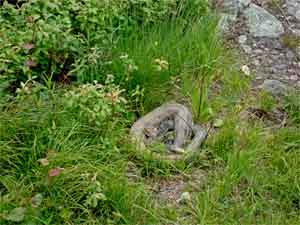 |
 |
Timber Rattlesnake on Overlook Mtn |
 |
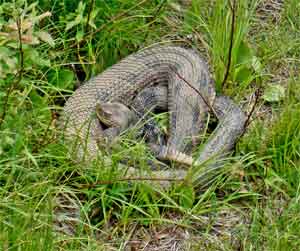 |
 |
Timber Rattlesnake on Overlook Mtn |
 |
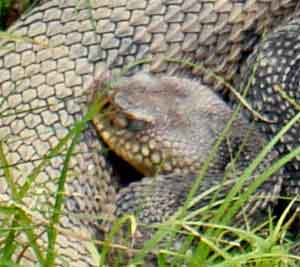 |
 |
Timber Rattlesnake on Overlook Mtn |
 |
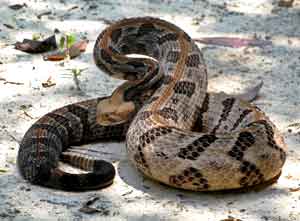 |
 |
Tan Morph Timber Rattlesnake |
 |
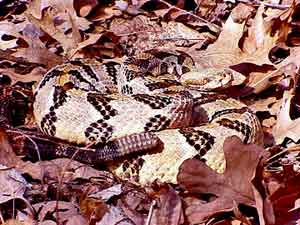 |
 |
Tan Morph Timber Rattlesnake |
 |
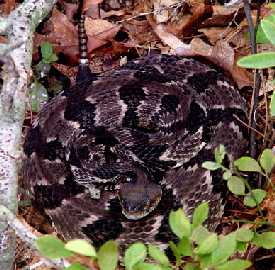 |
 |
Black Morph Timber Rattlesnake |
 |
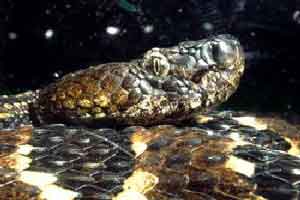 |
 |
Timber Rattlesnake head
Notice the slanted eyes |
 |
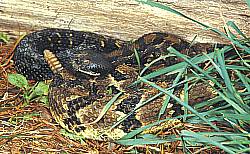 |
 |
Rattlesnakes commonly sit next to logs |
 |
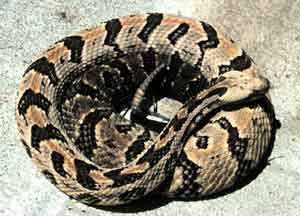 |
 |
Timber Rattlesnake sitting on a ledge |
 |
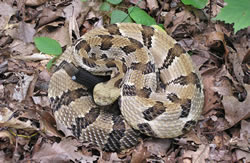 |
 |
Yellow Morph Timber Rattlesnake |
 |
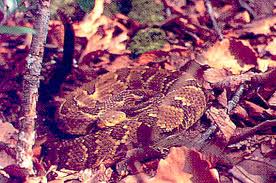 |
 |
Timber Rattlesnake can blend in with the environment |
 |
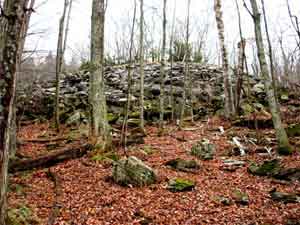 |
 |
Classic Timber Rattlesnake Habitat
on Mount Tremper. |
 |
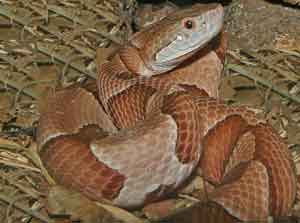 |
 |
Northern Copperhead |
 |
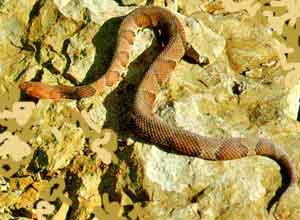 |
 |
Northern Copperhead |
 |
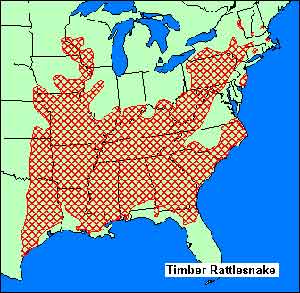 |
 |
Timber Rattlesnake Map of the USA. |
|

